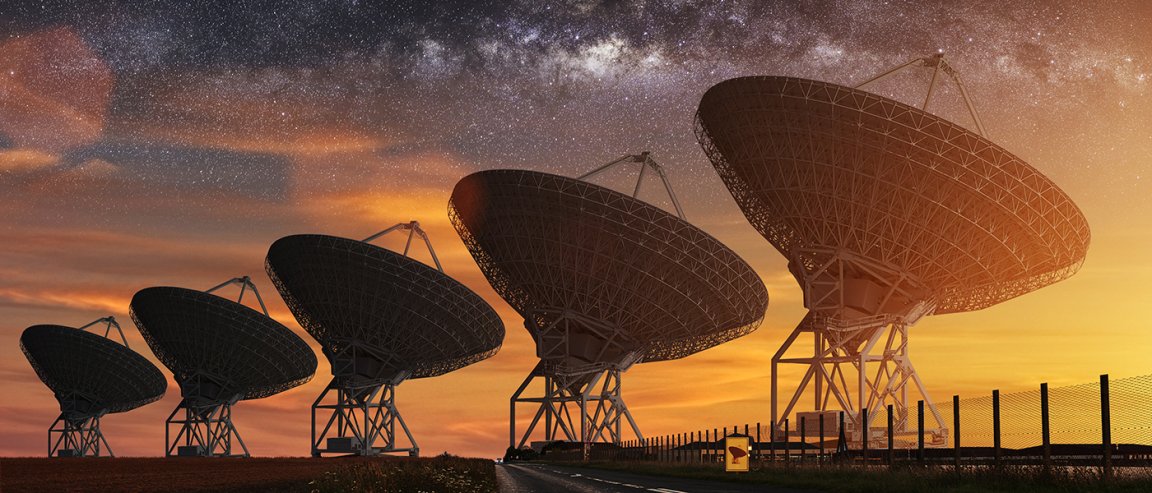
Fast Radio Bursts
Fast Radio Bursts (FRBs) have been baffling scientists since they were detected in 2007. Now, two physicists are suggesting to the scientific community that they may be evidence of space-faring aliens.
FRBs are extra-galactic, 5-millisecond bursts of radio emissions that generate 500 million times the energy our own sun emits. Finding them to begin with was such a feat that scientists dubbed them “Lorimer” bursts after the astronomer who discovered them. Since then, astronomers have detected over 17 FRBs, but until more evidence arose, the initial discovery of FRBs was hard to understand.

Studying FRBs was a challenge for researchers. It was similar to walking in a crowded mall and noticing a whale as you peruse the room. However, when you quickly look back to see if the large mammal iss really there, you don’t see anything. Just like you think you could have been hallucinating, scientists are confused that FRBs do not repeat.
In a sense, collecting data on FRBs requires a bit of luck. Even some of the most powerful telescopes like the Very Large Array near Socorro, New Mexico, cannot study the sky quick enough to register an event as quick as the FRB. While there are other, less powerful telescopes that can detect the signals FRBs put out a little quicker, they are unable to pinpoint the exact source of the FRBs.
Scientists, therefore, believe that FRBs may be as common as one every 10 seconds, but are there is no consensus when it comes to their origins. Some claim that the FRBs are caused by the merging black holes, colliding neutron stars, or isolated supernova explosions, but these explanations fail to explain all observations recorded.
A Different Approach — Aliens?
Astrophysicists from Harvard University, Manasvi Lingam and Avi Loeb, are suggesting that the FRBs may be from extra-galactic light sails. Loeb believes that, in an absence of a natural source for answers, we should look at an artificial origin for the source, such as a light sail.

While once a concept of science fiction, light sails are gradually gaining traction in our world. Light sails are hypothesized to travel through space with virtually no fuel. These sails are expected to utilize the momentum of photons and last as long as the structure could sustain itself.
In theory, it could be possible that an advanced alien civilization has mastered these technologies and utilizes them to travel in space. The Astrophysicist team postulates that frequencies of the FRBs are optimal for powering a light sail, and that the beams could be artificially produced by an emitter that is twice the diameter of Earth. The team goes on to suggest that the FRBs detected could power payloads that weigh 106 tons, but smaller lightsails could widely prevalent but difficult to detect because their spectral flux densities are too low.
It’s important to note that Loeb taking a speculative approach of the data, meaning that he hopes future astronomers can possibly rule it out based on evidence collected in the future. The full study will be published in the journal, The Astrophysical Journal Letters.